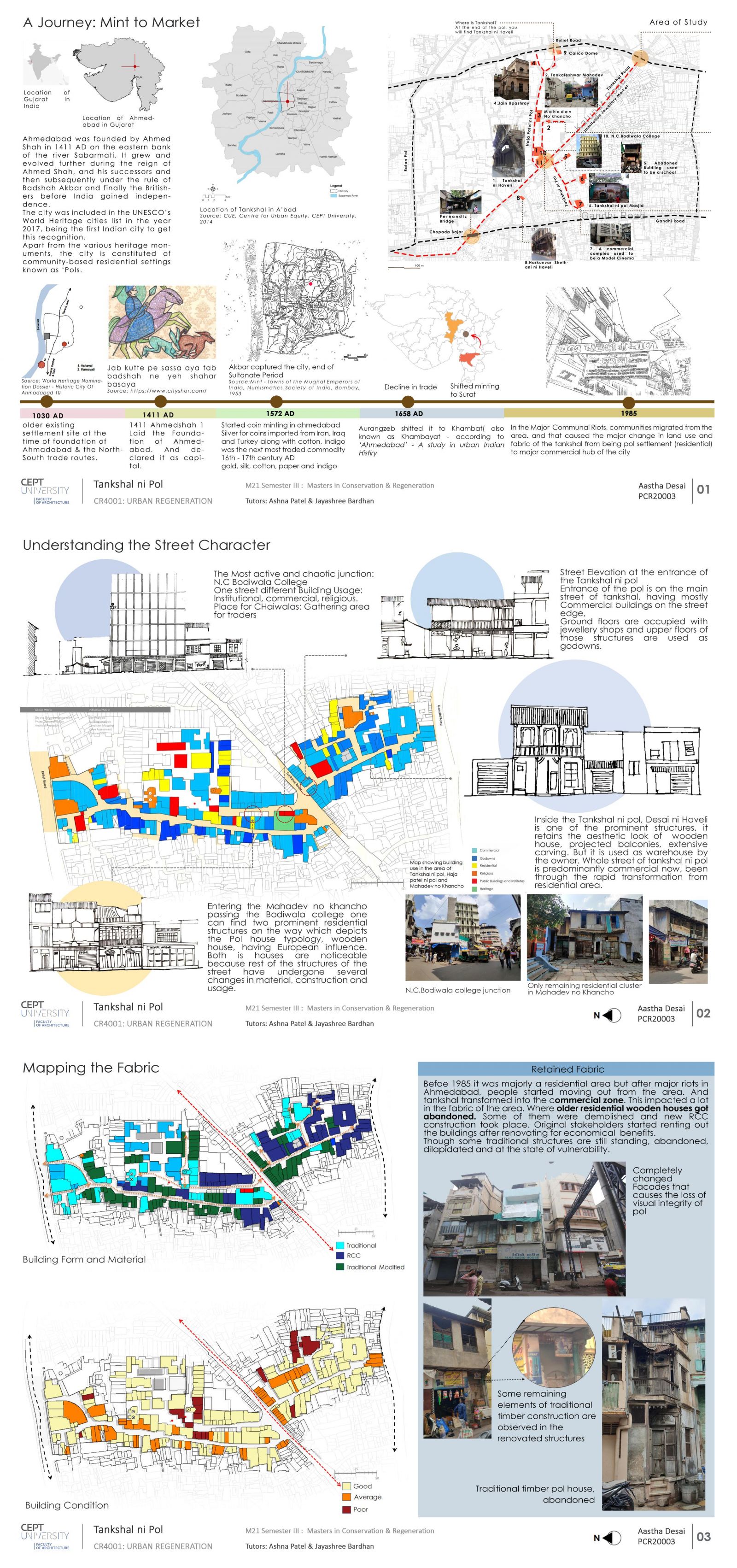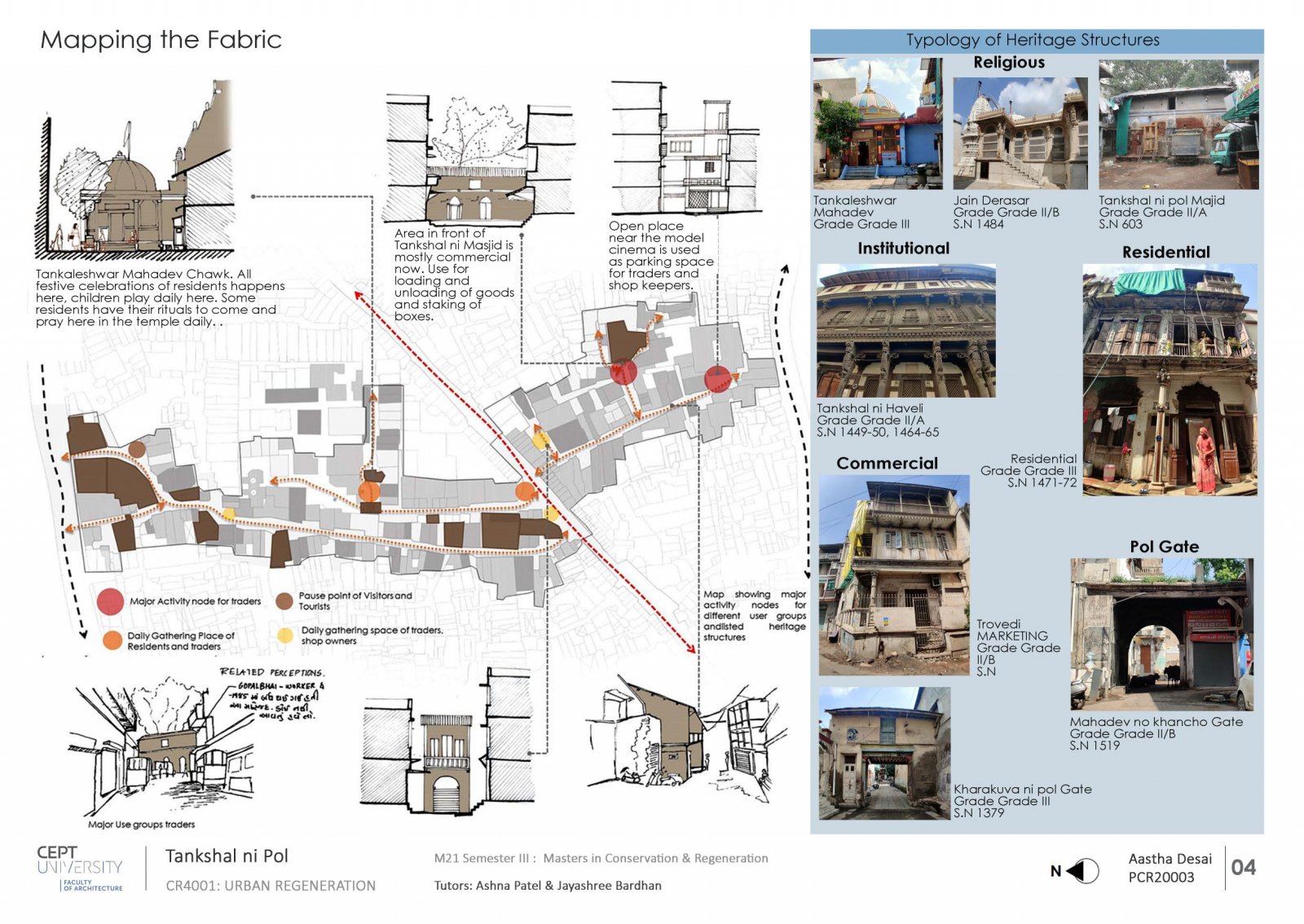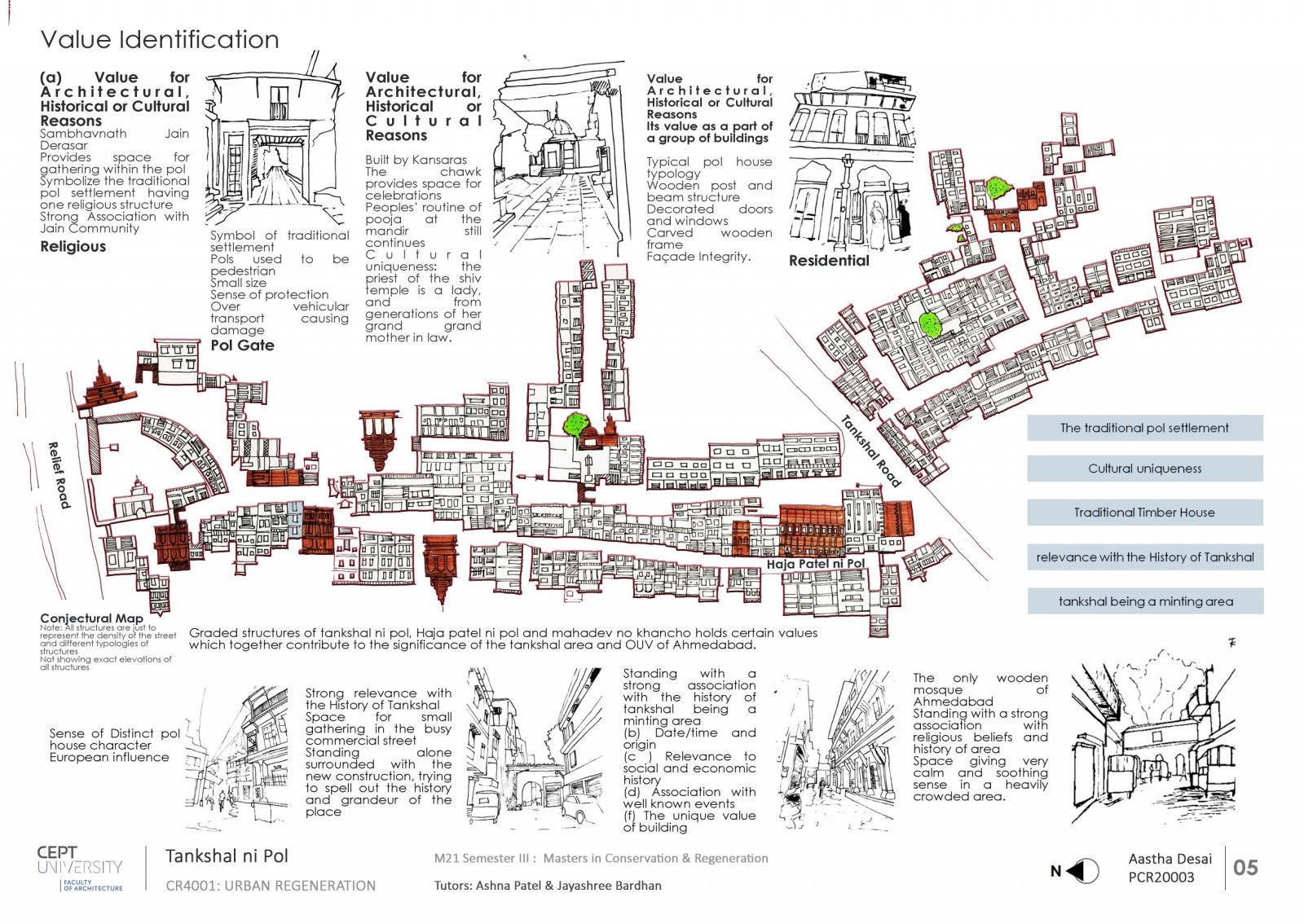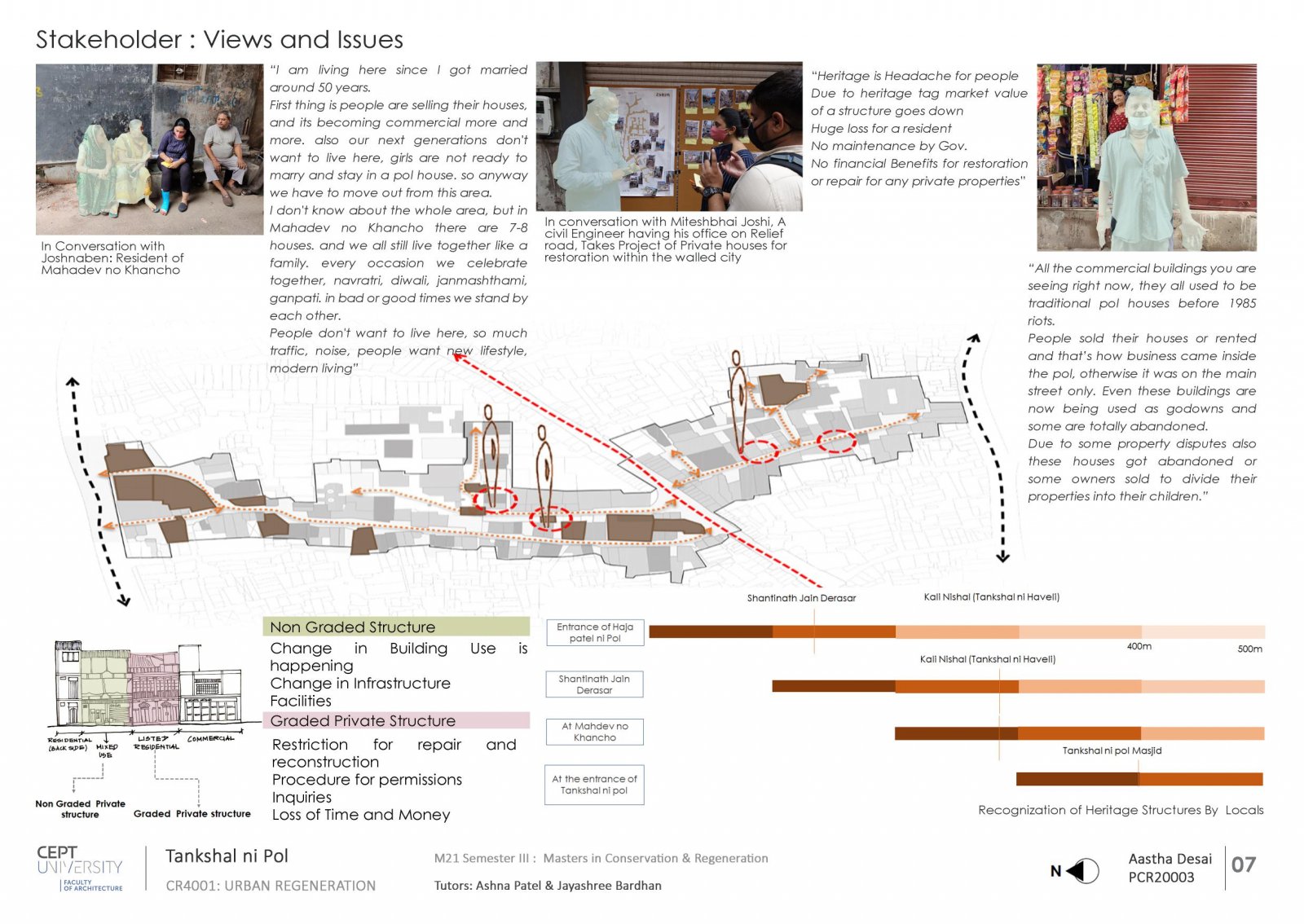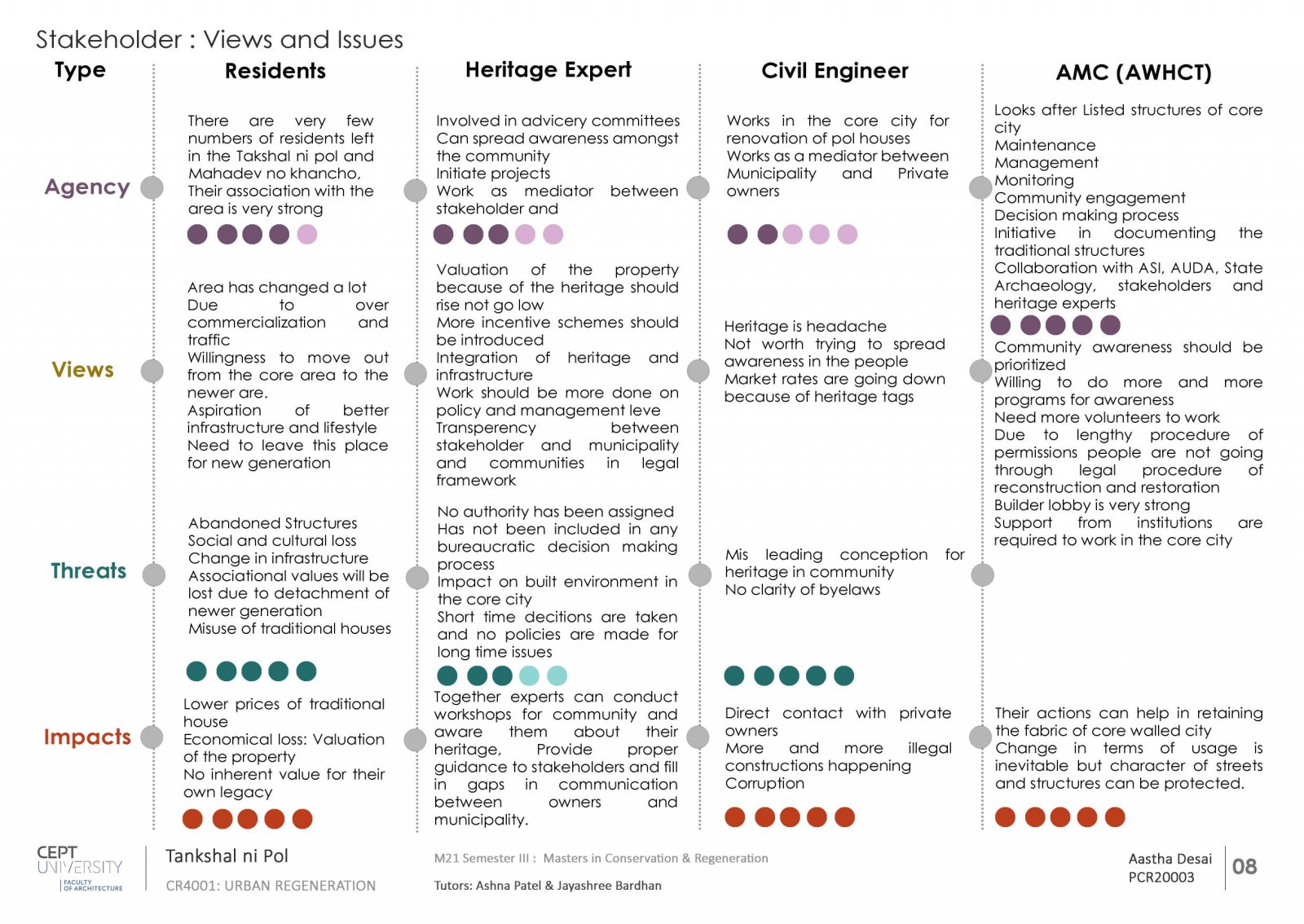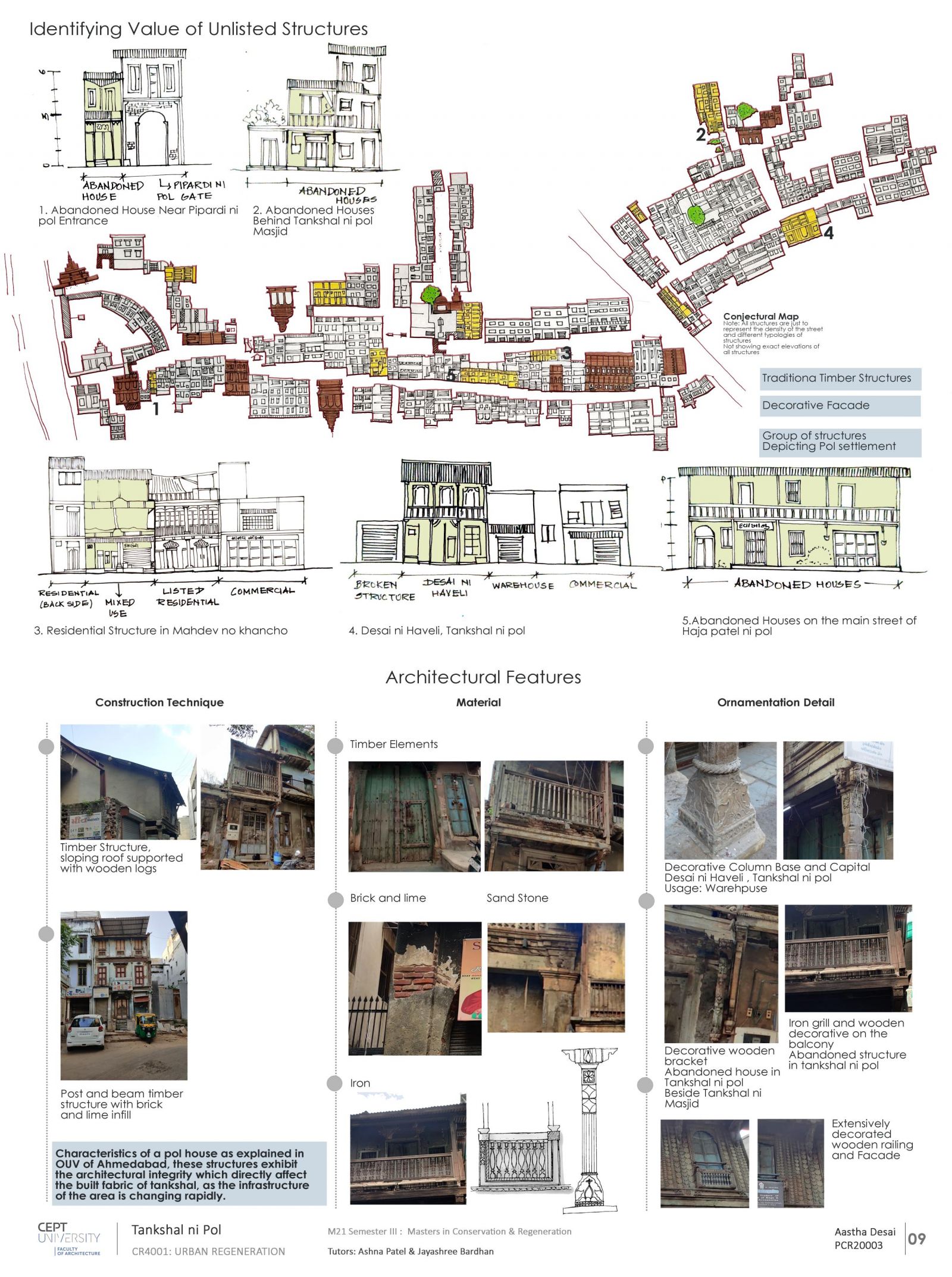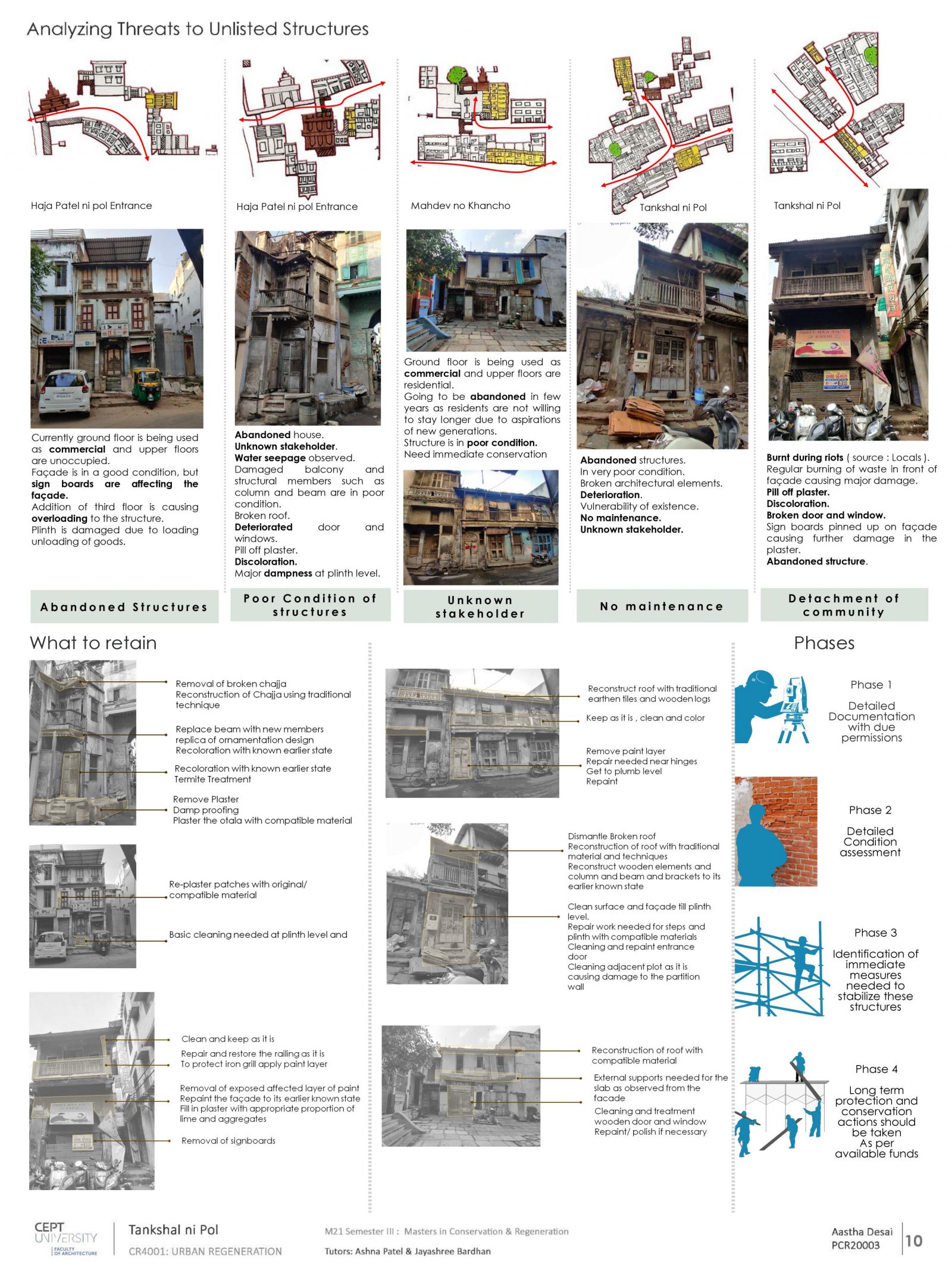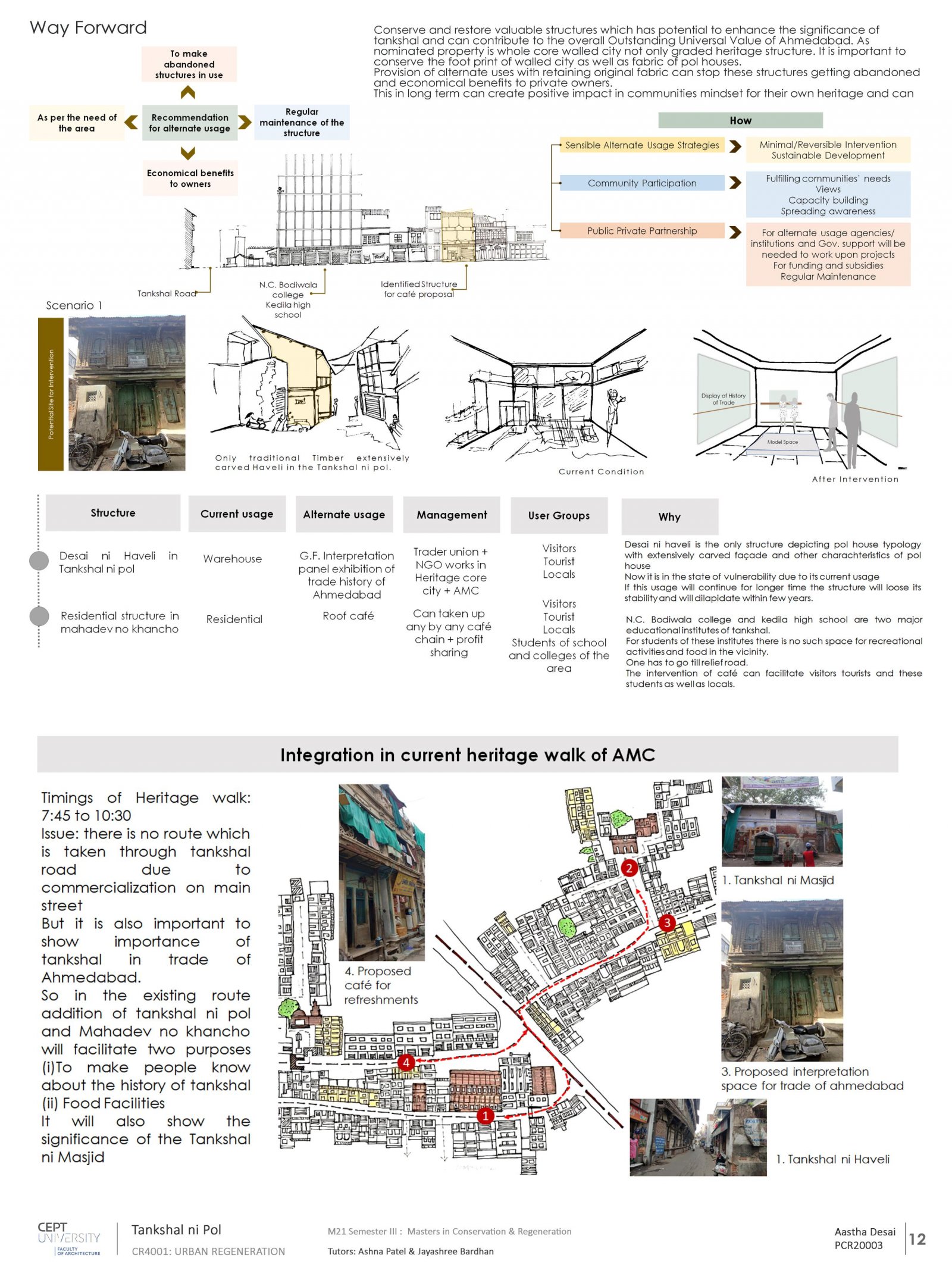Your browser is out-of-date!
For a richer surfing experience on our website, please update your browser. Update my browser now!
For a richer surfing experience on our website, please update your browser. Update my browser now!
In relation to the World Heritage City, Municipality, Institutes started listing and grading of heritage structures within the core walled city and outside the core city as well. This initiative was taken to protect significant structures of the city and gave them due recognition.
Tankshal is one of the most prominent areas of the core walled city of Ahmedabad. It has its historical significance in terms of being a minting place during the Mughal period, an area which is in the closest proximity of main market places like Manekchawk, Kagadi ol, Dhalgar ol and Ratan pol. At present time this area has become purely commercial and still related to mentioned markets.
Tankshal area consists of more than 20 internal pols, where Tankshal ni pol and Haja Patel ni pol consists of 14 graded structures.
These heritage structures are of different types as residential or religious.
But due to over commercialization of the area these structures are probably neglected and loosing their integrity, structural stability and aesthetic value.
Here there are several structures which do not have any grading but still holds memory of past and associational values.
Even the most common prototype found here in Tankshal road in mixed-used structures with the contemporary style of construction. Change is the need of the time and peoples’ aspiration but the amount of change and continuity in terms of usage, style of architecture, building material and form decide the authenticity of the place. For the future, a present should be preserved. It seems really important to safeguard these structures as all together they hold the integrity of the 15th-century footprint of Ahmedabad which is now the world heritage city. This will increase awareness for these structures in the locals and their association with it, also continuous monitoring will help in protecting them and prevent them from deterioration. Ultimately this will result in a holistic regeneration of the area by emphasizing heritage structures and their importance.
This is the urgent need of the time before these listed as well as nonlisted heritage structures get dilapidated and become just a photographic memory.
This project develops from GroupWork conducted as a part of studio processes that preceded individual lines of inquiry. Click on the button below (view additional work) to view GroupWork.
